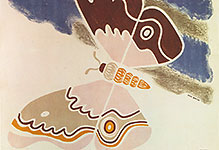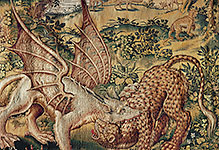
#03050339
Pottery askos (perfume flask) in the form of a lion,340-300 BCE. Probably made i...

#03050351
Roman wall painting from the House of Jason, Pompeii: The Rape of Europe.

#03050354
Clay ground 'Hadra' hydria (water-jar), Greek, probably from Egypt, c200 BC. Thi...

#03050362
Capital carved from alabastre from Volterra. H: 40 cm

#03050369
Bronze statuette of Vanth, Etruscan, found near Mount Vesuvius, Italy, 425-400 B...

#03050432
Scene of a hunt Herculanum, house of the Cerfs Around 60-80 CE Wallpainting;...

#03050433
Scene of a chariotrace Herculanum, house of the Cerfs Around 60-80 CE Wallpai...

#03050435
Roman mosaic showing a lion hunt 1st entury CE; Villa de Las Tiendas, Spain

#03050448
Tile antefix, Roman Britain, 2nd-3rd century. This object was one of a row of or...

#03050451
Silver tigress from the Hoxne hoard, Roman Britain, buried in the 5th century. T...

#03050452
The Great Dish from the Mildenhall treasure, Roman Britain, 4th century. The sta...

#03050457
Flanged silver bowl from the Mildenhall treasure, Roman Britain, 4th century AD....






